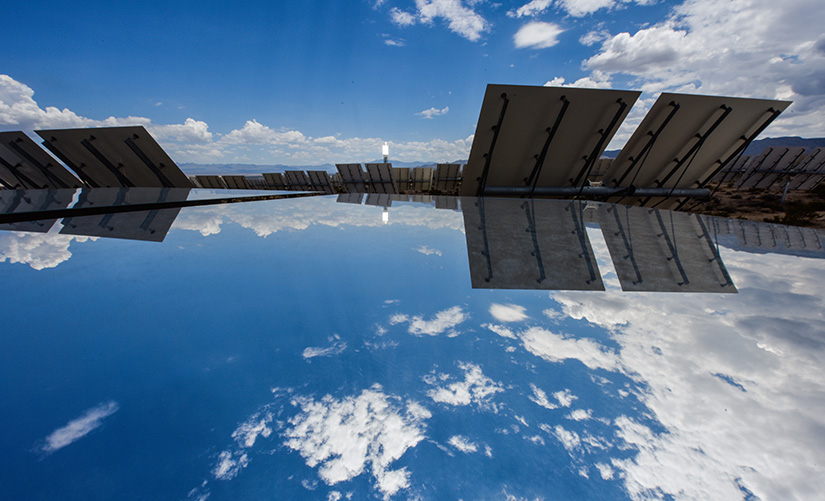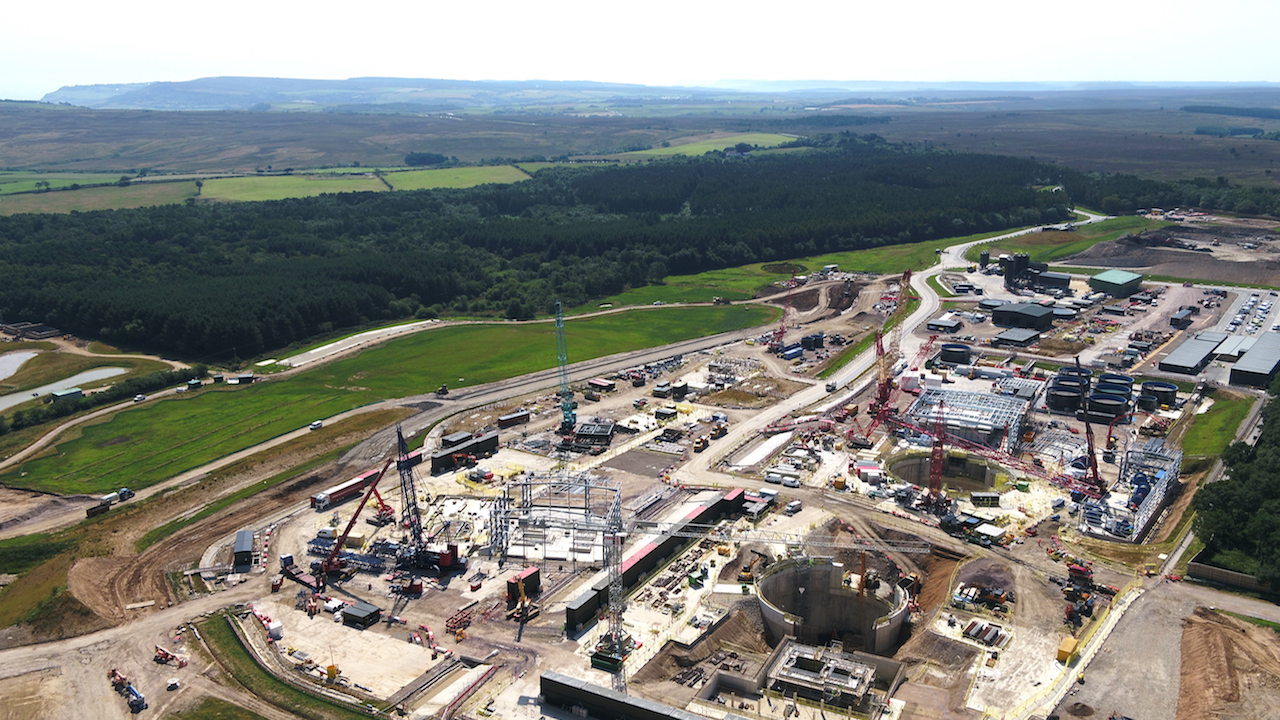Sign up for daily news updates from CleanTechnica on email. Or follow us on Google News!
The US startup Plug Power just announced the launch of its first liquid green hydrogen plant, the zero emission flight startup ZeroAvia is developing liquid green H2 refueling trucks, and Daimler Truck is looking to import the stuff from the United Arab Emirates. Suddenly everyone is talking about liquid green hydrogen. The only thing missing is the hydrogen fuel cell electric vehicles — oh, wait!
Liquid Natural Gas Down, Liquid Green Hydrogen Up
In a curious coincidence of timing, earlier this week The New York Times leaked word that approvals for 17 proposed new LNG export terminals in the US may stall out as the Biden administration takes climate impacts into consideration.
That almost buried the news about liquid green hydrogen, but not quite. The Intertubes lit up on Tuesday when Plug Power announced that its new liquid green hydrogen plant in Woodbine, Georgia is up and running.
“A truly unique accomplishment, this is the largest electrolytic liquid hydrogen production plant, and largest PEM electrolyzer deployment operating in the U.S., representing a landmark achievement in Plug’s build-out of a vertically integrated hydrogen ecosystem,” Plug Power said of itself.
The plant will push out 15 tons of liquid green hydrogen per day, which Plug Power calculates is enough to fill the daily needs of 15,000 forklifts.
How It Started…
Before you laugh, forklifts are a big deal. CleanTechnica first came across the forklift angle all the way back in 2010, when we noticed that the US Department of Energy’s National Renewable Energy Laboratory was looking into the idea of zero emission fuel cells to replace batteries in forklifts and other material handling vehicles.
The idea caught on and now fuel cell stakeholders are pursuing the idea of leveraging hydrogen-equipped warehouses to build a network of fueling stations for long haul fuel cell trucks.
Plug Power was among the early proponents of fuel cell forklifts, and now here they are hopping on the liquefied hydrogen bandwagen. The new plant in Georgia is equipped with an on-site condenser system to liquefy hydrogen gas, which Plug will deliver to its existing network by truck.
As for why liquid hydrogen, that’s a good question. It’s much more energy-dense than hydrogen gas, for starters, and Plug Power suggests that transporting liquid hydrogen is more economical.
“The addition of this liquid green hydrogen production plant to Plug’s electrolyzer, fuel cell, and cryogenic equipment manufacturing facilities enables Plug to further its vision for building a vertically integrated green hydrogen ecosystem, a one-stop shop for producing, liquefying, storing, and transporting hydrogen,” the company explains.
Liquid Green Takes To The Skies
Meanwhile on the other side of the country, the fuel cell aircraft startup ZeroAvia has been laying plans to secure a supply of green hydrogen and build up the hydrogen fueling infrastructure.
In the latest news, on January 22 ZeroAvia nailed down a $3.25 million award from the California Energy Commission to develop a liquid hydrogen refueling truck for heavy-duty use, including maritime as well as aviation and other mobility applications.
Billed as a “first-of-a-kind” fuel cell refueling truck, the new vehicle will be capable of refueling a hydrogen fuel cell jet in about the same amount of time that it would take to refuel a conventional jet with jet fuel.
“Hitting this ambitious target will support hydrogen-powered aircraft in meeting tight turnaround windows, especially in regional transport,” ZeroAvia explains.
That quick turnaround time helps explain why ZeroAvia is focusing on fuel cell electric flight rather than battery-electric flight. They also have an explanation for the liquid hydrogen angle.
“To scale hydrogen engines to larger commercial aircraft and to enable longer ranges across all aircraft sizes, cryogenic liquid hydrogen must be used to reduce the size and weight of the fuel storage systems,” the company observes.
ZeroAvia plans to use hydrogen gas for its first ZA600 electric engins, which will launch commercially in 2025 for 9-19 seat passenger and cargo flights. The next step is the bigger ZA2000 engine for larger aircraft.
“These larger aircraft – such as the Dash-8-400 76-seat aircraft ZeroAvia is working on with Alaska Airlines and other partners – will require up to 1 ton of LH2 storage on board to support up to 700 nautical mile range, with target launch in 2027,” ZeroAvia said.
Meanwhile, Over In Germany
Turning now to the other side of the planet, we see that Daimler Truck Holding AG has also caught the pourable, sustainable H2 bug. Earlier today the company signed Memorandum of Understanding with the renewable energy developer Masdar to explore the potential for Germany to import liquid hydrogen from Abu Dhabi, the capital of the United Arab Emirates. Presumably the outcome will depend on whether or not Daimler’s efforts to promote fuel cell trucks in Germany pan out.
“In order to decarbonize commercial vehicles, it is absolutely crucial to make green energy globally available,” explained Daimler Truck CEO and Chairman Martin Daum. “Our initiative with Masdar marks an initial step for us to enable the supply of liquid green hydrogen in Europe.”
Daimler is still committed to its battery-electric truck business, but fuel cells are also in the future, and so is liquid green hydrogen. The company notes that its prototype Mercedes-Benz GenH2 Truck made a 1,047 kilometer trip of 1,047 across Germany with just one fillup of liquid hydrogen, and a whole trial fleet of the truck will deploy this year.
Big Fuel Cell News From GM And Honda
Hydrogen is an all-purpose chemical that plays a leading role in modern food systems as well as industrial process and consumer products, but until now the global hydrogen supply has been extracted from natural gas and gasified coal. Kicking out fossil energy is a key step in global economic decarbonization whether or not a market for hydrogen fuel cell electric vehicles ever emerges.
The fuel cell vehicle going has been particularly slow here in the US, but things are beginning to pop. CleanTechnica caught wind of something big all the way back in 2013, when Honda and General Motors announced a new, next-generation fuel cell collaboration. By 2017 the two companies were planning to build a new fuel cell factory in the US, and now the fuel cell promise has been fulfilled.
Earlier this morning the two companies announced the start of volume production for their Fuel Cell System Manufacturing 50-50 joint venture in Brownstown, Michigan.
Billed as the first of its kind, the new FCSM facility is a soup-to-nuts operation, from raw materials for the fuel cell membrane and electrode “all the way through completed systems,” as described by FCSM president Suheb Haq.
The two companies appear to have resolved the key stumbling block of cost. Between the design of the fuel cell itself, economies of scale, supply chain streamlining, and other tweaks, GM and Honda expect that the new fuel cell systems will be one-third less expensive to manufacture, compared to the cost of the fuel cell system used in the 2019 Honda Clarity.
And Cheaper Green Hydrogen, Too
Meanwhile, work is continuing apace on driving down the cost of green hydrogen. The membrane used in electrolyzers is expensive and easily fouled by impurities in water. Taking membranes out of the process is one way to cut costs, and that pathway is being pursued by the Israeli startup H2Pro.
Another angle of attack is to develop new systems that replace the membrane entirely. Among the research milestones to cross the CleanTechnica radar this week is a new solar powered thermochemical water-splitter from the University of Colorado Boulder. Researchers at MIT are also hot on the trail of a thermochemical device that leverages solar power to split hydrogen from water.
Follow me @tinamcasey on Bluesky, Threads, Post, and LinkedIn.
Image: New liquid green hydrogen production facility runs on renewable energy and water (courtesy of Plug Power).
Have a tip for CleanTechnica? Want to advertise? Want to suggest a guest for our CleanTech Talk podcast? Contact us here.
Latest CleanTechnica TV Video
I don’t like paywalls. You don’t like paywalls. Who likes paywalls? Here at CleanTechnica, we implemented a limited paywall for a while, but it always felt wrong — and it was always tough to decide what we should put behind there. In theory, your most exclusive and best content goes behind a paywall. But then fewer people read it!! So, we’ve decided to completely nix paywalls here at CleanTechnica. But…
Thank you!
CleanTechnica uses affiliate links. See our policy here.




